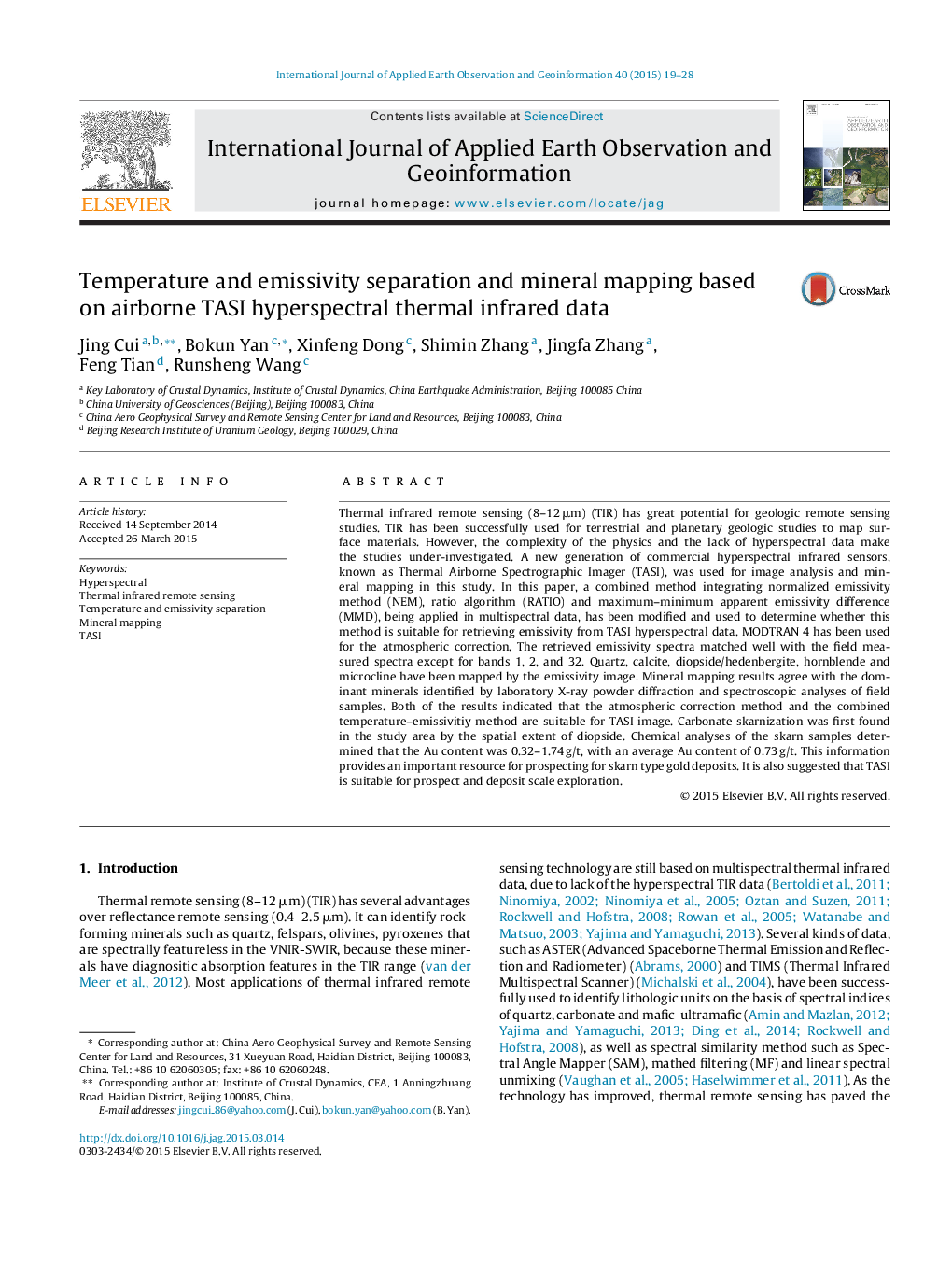| Article ID | Journal | Published Year | Pages | File Type |
|---|---|---|---|---|
| 6348590 | International Journal of Applied Earth Observation and Geoinformation | 2015 | 10 Pages |
Abstract
Thermal infrared remote sensing (8-12 μm) (TIR) has great potential for geologic remote sensing studies. TIR has been successfully used for terrestrial and planetary geologic studies to map surface materials. However, the complexity of the physics and the lack of hyperspectral data make the studies under-investigated. A new generation of commercial hyperspectral infrared sensors, known as Thermal Airborne Spectrographic Imager (TASI), was used for image analysis and mineral mapping in this study. In this paper, a combined method integrating normalized emissivity method (NEM), ratio algorithm (RATIO) and maximum-minimum apparent emissivity difference (MMD), being applied in multispectral data, has been modified and used to determine whether this method is suitable for retrieving emissivity from TASI hyperspectral data. MODTRAN 4 has been used for the atmospheric correction. The retrieved emissivity spectra matched well with the field measured spectra except for bands 1, 2, and 32. Quartz, calcite, diopside/hedenbergite, hornblende and microcline have been mapped by the emissivity image. Mineral mapping results agree with the dominant minerals identified by laboratory X-ray powder diffraction and spectroscopic analyses of field samples. Both of the results indicated that the atmospheric correction method and the combined temperature-emissivitiy method are suitable for TASI image. Carbonate skarnization was first found in the study area by the spatial extent of diopside. Chemical analyses of the skarn samples determined that the Au content was 0.32-1.74 g/t, with an average Au content of 0.73 g/t. This information provides an important resource for prospecting for skarn type gold deposits. It is also suggested that TASI is suitable for prospect and deposit scale exploration.
Related Topics
Physical Sciences and Engineering
Earth and Planetary Sciences
Computers in Earth Sciences
Authors
Jing Cui, Bokun Yan, Xinfeng Dong, Shimin Zhang, Jingfa Zhang, Feng Tian, Runsheng Wang,
